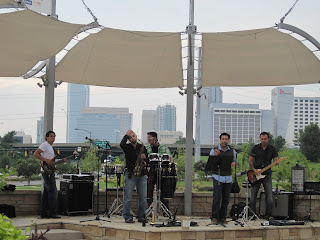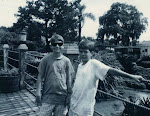*******WARNING! Graphic Images and Language******
10 years ago, I wrote a paper about Mexican narcocorridos where I explained the central role of vulgar wordplays and jokes in songs about drug trafficking along the US-Mexico border. I posited that songs constructed gender roles into highly sexualized, constrictive portrayals, yet some musicians attempted to undermine and bypass these archetypes through creative songwriting and performance. This past weekend, I saw a concert that gave me pause to return to this theme and consider what vulgar means a decade later.
First, to be honest, I was not the first or the last to connect the vulgar to border culture or Mexican culture in general. Octavio Paz, in The Labyrinth of Solitude, devotes a chapter to the verb "chingar" and the Mexican psyche, analyzing the historical roots back to the indigenous guide, Malinche, who aided and abetted the military and sexual conquest of Hernan Cortes' army over the Aztecs. In music, norteño and banda are not the only Mexican styles that stylized cursing and vulgar expressions to get their message across and endear artists to their audiences- think of Molotov or the between-song live ramblings of Alex Lora of El Tri.

Yet when I read US writings on norteño music and narcocorridos, the most common metaphor is that this music is the "gangsta rap" of Mexico. This comparison is both valid and false. Certainly the narcocorrido has been attacked and censored by the same sort of "morally righteous" crusaders in Mexico that once went after 2 Live Crew, Snoop Doggy Dogg, and Tupac Shakur in the US- middle-class, socially conservative people removed by generation, geography, and socio-economic standing from the "reality" sung about in these songs. And the recording industries of both genres developed and remain centered in metropolitan Los Angeles. But by comparing gangsta rap to narcocorridos, writers impose a US-centric idea of music development on an autochthonous form that developed in Mexico over centuries, reached a stylistic maturity during the Mexican Revolution of the 1910s, and continues to retain many of the stylistic and technical forms of a century ago, even as it has evolved to incorporate new technological innovations and lyrical themes.

Not to pick on gangsta rap, which evolved in its own right, very quickly crossing over to a younger, middle-class suburban white audience and leading the charge of rap music that transformed American and global popular music in the late 1990s. But norteño and banda, the two most common subgenres which feature narcocorridos, have not been crossover successes. One could point to a language barrier, but even within the Latino community in the US (at least this has been my observation) the style is incompatible and culturally incomprehensible to folks from the rest of Latin America. Compare this with the general popularity and acceptance of salsa, cumbia, merengue, rock en español, and reggaeton; it seems people just can't get over the polca beat or the gritty lyrics.
When I lived in Ciudad Juarez in 1999, the narcocorrido appeared in a different light than it does now. Call it a loss of innocence, the end of an era, whatever...
I was aware that drug-trafficking was a serious business, and saw brief glimpses of the seedy underbelly of the border. But drug cartel members seemingly just killed each other, and if you kept your head down, so to speak, you'd be alright. I was aware of the killing of women maquiladora workers in the outskirts of the city, of drive-by shootouts in downtown intersections, of the rise in kidnappings, but it didn't seem like the mounting evidence of a violent drug war that now glares in the rearview mirror.

Where I once joked that musicians who wrote narcocorridos surely must have visited the villas of cartel lords to describe their wild parties in such detail, now musician after musician is shot down on dark highways. Where I once admired the bravado and wit of musicians who critiqued the hypocrisy of the US drug enforcement certification process for foreign aid, now I wonder if Mexico can survive a full fledged drug war with its sovereignty intact and a functioning economy.
Which brings me to last Sunday. Viva la Musica, a local concert, featured several regional mexicano groups. One group, Los Amos, really caught my attention because of the vulgar nature of their lyrics and over-the-top performance style. For example, they sang a love song, but instead of the usual syrupy lyrics, the chorus sounded, "chinga su madre." Another song had the lead singer conducting a call and response, "when I say ex-girlfriend, you say puta." Throughout the show, Los Amos brought out bottle after bottle of Buchanan's scotch, encouraging each band member to drain a bottle; then they called out the radio DJs from La Raza to join in the binge drinking. Women in the crowd screamed, threw bras on stage, and exposed their breasts to the band. Meanwhile, the women passing their children onstage to dance and then a bevy of women joined the children onstage for the final song.
Los Amos wear some feminine headgear-

What does all this mean? Should one judge using middle-class western values that say that vulgarity and "family friendly" activities don't mix? Does the performance of binge-drinking remind you more of fraternity antics or men and women in villages throughout Mesoamerica who get fall-down drunk on Saturday afternoons? Should Los Amos be decried for their profanity and crassness or applauded for their entertaining shtick?

























































